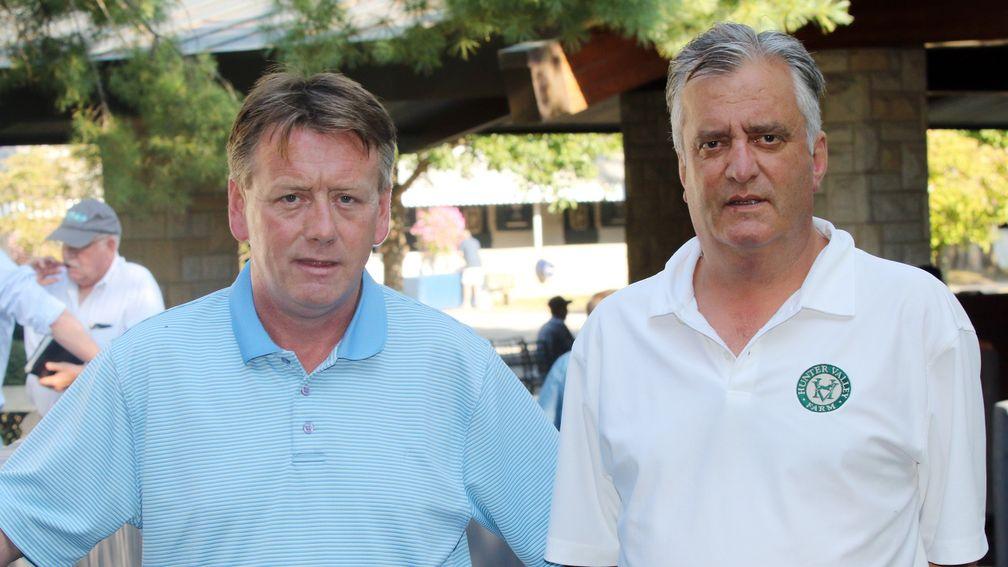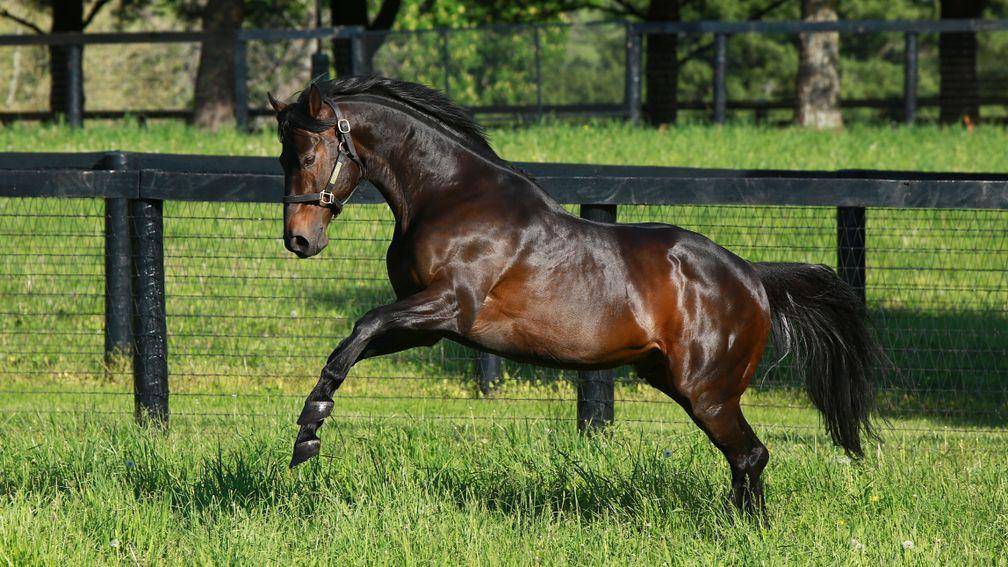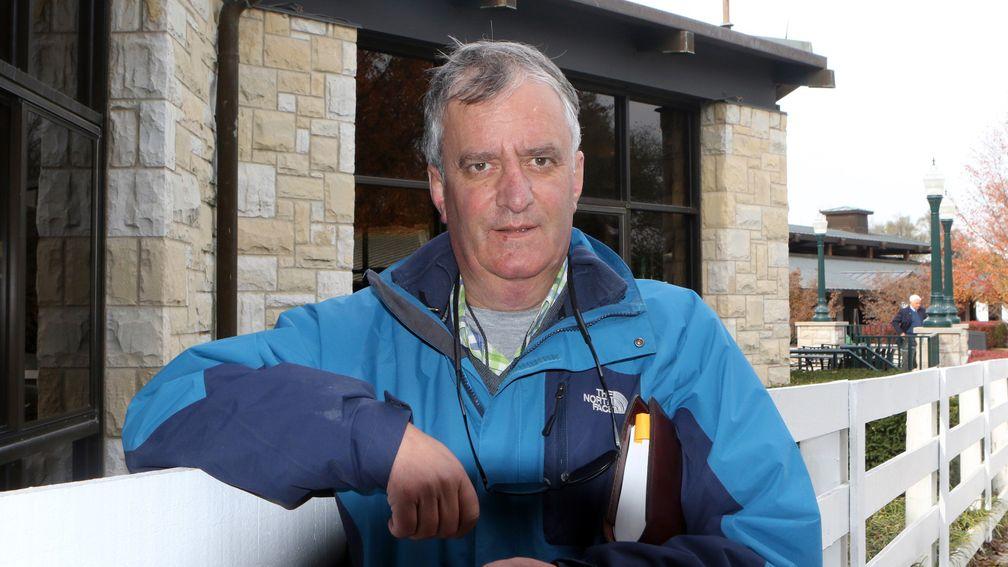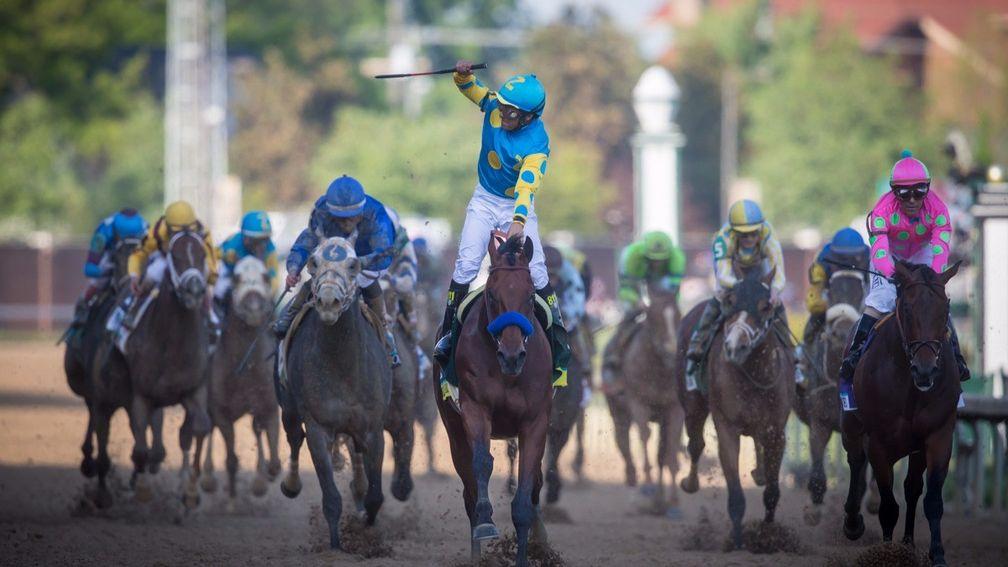Luck of the Irish remains strong at Hunter Valley Farm
Tom Peacock speaks to Fergus Galvin and Adrian Regan of the Kentucky operation

When four members of America’s large Irish diaspora gathered to discuss the idea of buying a farm together, none of the quartet imagined that the behemoth of Hunter Valley would emerge from a table of empty drinking vessels.
In its 15 years of operation, Adrian Regan and Fergus Galvin, along with their silent partners Tony Hegarty and John Wade, have developed the business into one which sells more than 200 horses a year and regularly feature among Keeneland’s leading consignors of both foals and yearlings.
"I think we were all out one night and after maybe a drink or two, we hatched this idea," Galvin recalls.
This article first appeared in our 16-page Keeneland September Yearling Sale supplement, full of interesting features and essential statistics and available to read online by clickinghere
"Next morning we called everybody, 'is everyone still on board', and they were, so we went looking for a farm. It just so happened there was one very conveniently located only 10 mins from Keeneland, it used to be called Golden Gate Stud, and ironically enough there was an Irish Derby winner, Zagreb, raised here back in the day."
Hegarty and Wade, who own a construction business in Chicago, helped to give Regan and Galvin a financial footing and in 2004 the old friends who were on the Irish National Stud course together set to work drumming up interest.
"You could imagine how nervous we were," says Regan. "At the time the country wasn’t exactly booming, we didn’t really start it at the best of financial times but we got lucky with a couple of pinhooks straight away and things kept going. We had confidence in ourselves that we could go and do it, but you have to have a certain amount of luck.
"I had been managing Crescent Hill for the Stiltz family. Basically I had to bring in the clients and they employed me to do that as well as manage the farm. I’d been doing three years of hard hustling and it was a continuation of what I’d been doing, except we had to make ends meet as we also paid the bills!"
With Galvin also known in the trade from long stints at Pin Oak, Newgate and Coolmore, the pair had enough of a reputation to be able to take a decent-sized consignment to the September Yearling Sale in 2005. And it contained one particular $250,000 youngster who was to set them on the right path.

"What he went on to accomplish [in the Champagne Stakes and Florida Derby], it certainly stuck with our name a little bit, so to speak, and we also sold [son] No Nay Never, although he was a weanling. Those two horses in themselves are great advertisement for the farm. It’s a few moons now but it doesn’t seem that long ago."
The results kept coming through the likes of multiple Grade 1 winner and promising stallion The Factor and Hunter Valley acquired major international clients included Qatar Racing, for whom they sold the dual Oak runner-up Secret Gesture for $3,500,000.
Neither Galvin nor Regan are the types to shout their success from the rooftops, nor do they believe there to be a particular reason as to how they have broken into the top tier.
"I suppose people know that we work hard outside the barn and we represent everybody the same," says the latter. "I think that’s been recognised and more and more people are entrusting us to sell their horses, which is really appreciated."
Galvin also explains that maintaining a healthy mixture of clients helps.
"We’ve got several pinhooking partnerships ourselves, a lot of people come in with us, and us with other people as well, we’ll take a piece, and everyone has fun doing it. We’re maybe half pinhooks, half homebreds, and we sell for others who just send them to us for the sales.
"I guess it spreads the risk a bit, you get more people involved. There’s probably not two horses on the farm owned the same way, but people come in and like what we do."
It helps Hunter Valley to take the rough with the smooth.
"Obviously sales times can be stressful, it’s your whole year’s work on the line," Galvin says. "You try to enjoy it but I’m not saying it’s a cakewalk by any means. You enjoy with when the hammer drops, anyway.
"We’ve had so many and owned so many, it’s the bigger picture we look at really. You’re going to stub your toe along the way, but just move on."
Despite both having spent a quarter of a century in Kentucky, the pair’s Irish accents are undiminished and they attempt to get home most years if possible, although this is something of a gruelling experience for Galvin, who has four young children.
With an ever-expanding business, though, neither feels they are likely to relocated any time soon.

Ironically, managing a stud was not Regan’s intention when he set foot in America in the mid 90s.
"I had one of those Morrison visas, I was intending coming to do six months to qualify for the full visa, but I soon realised after half of that that I was loving it, and I knew it was going to be a longer stint," he says.
"I had in my head when I came over that I was wanting to be a trainer but I went to Padraig and Aveen Campion at Blandford Stud, they really gave me a wide experience at everything. Padraig was pre-training and also gave me an introduction to the sales, to be honest, I still say to this day he’s one of the best men to sell a horse at the sales that I’ve known.
"I was still thinking I was going to be a trainer, Padraig got me in touch with Eoin Harty, who was with Bob Baffert at the time. I soon realised that the hours that go into it and the chances of being a Bob Baffert over there were slim. I made a decision that that I had to go and try to get a stud job and go down the road that a lot of my friends were."
It is a road that has sent him in very much the right direction, particularly after that one hazy night.
"I don’t know if it was to instil dutch courage into us, but there were sore heads when everything was signed up," Regan chuckles. "There have been a few since too, obviously."
Hunter Valley's September draft
Hunter Valley will be consigning more than 70 yearlings through the 13 sessions of Keeneland. Included among the 14 Book 1 offerings are five sons and daughters of American Pharoah and Fergus Galvin says that they have been firmly behind the Triple Crown hero.
"We’re big fans of Pharoah," he says. "The ones we have up at the farm are all very good. They’re very athletic horses, that’s the one common thing about them. They’re great movers and he’s got off to a great start, so we’re pretty excited about those."
While reluctant to single out individuals, Galvin gives a good mention to a Medaglia D’Oro colt (453), who is a half-brother to Grade 1 Del Mar Futurity winner Klimt.

"I’d say it probably is our largest consignment for September and I think we’ve a strong group in each book. Even in Book 5 there are some good individuals, I know the Europeans have been staying longer and longer, and I’m really hoping they stay out the trip as we promise them quality throughout!"
Galvin also voices his approval of the decision by Keeneland to abbreviate Book 1 to three days from four.
"Last year there were questions a little about the format, I think quite a few people thought it was just a stretch that there wasn’t enough quality to fill four days of Book 1. Maybe the numbers weren’t there for four, and perhaps a few people got slightly aggravated. I think the shorter format should work.
"From start to finish you’re getting different audiences, not completely different but at stages new people come in. The high-end Europeans stay maybe Book 1 and 2, then the pinhooking type Europeans come from the first weekend on. As long as they can stay here, they like to stay here, because there’s so many horses.
"When you go back into the books, with 300, 400 horses a day they go pretty quick and that’s where the bargains are found sometimes, in the middle of a big crowd. They might be back in Book 4 or 5, but there have been some big pinhooks done to Europe at relatively modest prices."
More news:
Classic-placed Southern France sold to Australia as Melbourne Cup bid looms
Dam of Winx has Deep Impact foal to continue champion mare's dynasty
Godolphin go all out at Baden-Baden as Sea The Stars filly sets a new record
Published on 9 September 2019inInternational
Last updated 12:18, 9 September 2019
- Landmark first Classic success for Havana Grey as Beenham wins the Italian 1,000 Guineas
- First European Classic win for Kessaar as Melfi wins the Italian 2,000 Guineas
- Haya Zark springs a surprise at Longchamp to give Zarak a second Group 1 winner
- Seven up for Starspangledbanner as Beauty Eternal makes Group 1 breakthrough
- Kitasan Black's half-brother bound for the Japanese Derby after Classic trial success
- Landmark first Classic success for Havana Grey as Beenham wins the Italian 1,000 Guineas
- First European Classic win for Kessaar as Melfi wins the Italian 2,000 Guineas
- Haya Zark springs a surprise at Longchamp to give Zarak a second Group 1 winner
- Seven up for Starspangledbanner as Beauty Eternal makes Group 1 breakthrough
- Kitasan Black's half-brother bound for the Japanese Derby after Classic trial success